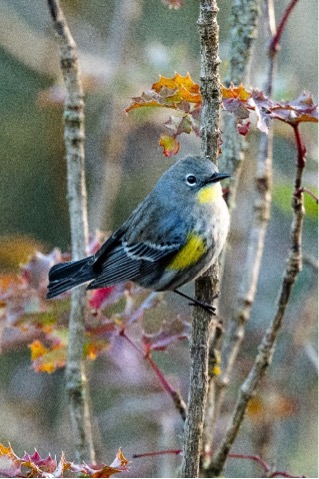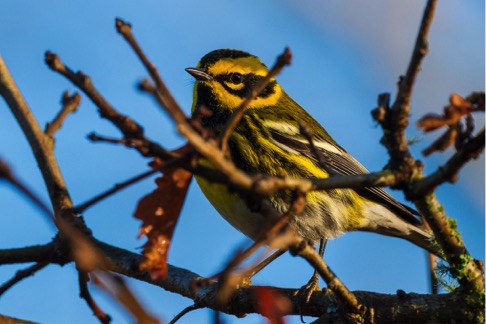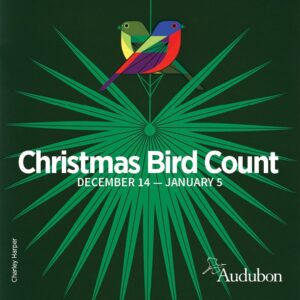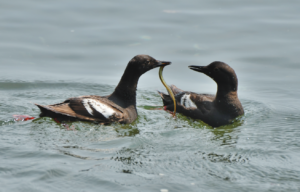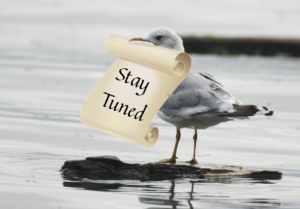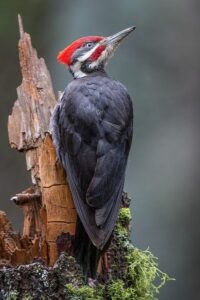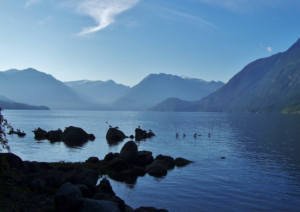Kathleen Snyder – February 8, 2021
Map: LOTT Clean Water Alliance; eBird: Hawks Prairie Ponds and Recharge Basins
The Hawks Prairie Ponds are a hidden birding gem in Thurston County. Situated amidst giant warehouses and new developments, these ponds provide a welcome respite for wildlife. Managed by Lott Clean Water Alliance, this property attracts a great selection of “regular” birds, as well as the occasional rarity.
There are 2 access points for this property but only one, on Hogum Bay Rd NE, provides an entry that will accommodate wheelchairs. The address is 3001 Hogum Bay Rd NE, Lacey. Note there are neither restrooms nor drinking water available.
The parking lot at this entrance does not have signed accessible parking spaces but the area is large and well-maintained with gravel over hard-pan soil. There is usually one or two cars parked on a typical day. The trails are arranged in a figure eight around various settling ponds. One can choose a variety of configurations. The shortest circle is one-half mile; the full figure eight is almost a full mile. The trail is wide enough for maintenance vehicles and is, again, gravel over hard-pan soil. Except for a slight upward slope when you come to the first loop, the trail is flat. There are no fees to use this area. Once inside the first fence, there are no other gates or obstructions.
While walking this spot, you will find various informational signs about the water treatment process, twelve benches, and four shelter kiosks, also with informational signage. There won’t be many visitors but the majority of people bring their dogs. Leash requirements are usually followed. This facility has mostly open terrain with some tall evergreens and some native oak. You will hear construction noise as well as traffic noise. It is well maintained with no graffiti or homelessness.
The Hawks Prairie Ponds feature several small ponds and recharge basins. With its native landscaping, it is a lovely place any time of year. In the winter several species of ducks are attracted to these ponds, including American Wigeon, Ring-necked ducks, Gadwall, Green-winged Teal, Northern Shovelers, and Bufflehead. If you’re lucky you may spot an occasional Eurasian Wigeon or Redhead!
The native plantings around the ponds attract a lovely variety of songbirds. This is especially a great spot for warblers and kinglets! Yellow-rumped Warblers are numerous during the winter, and Townsend’s Warblers are reliable. Kinglets are pretty much everywhere! Sparrows scratch around in the underbrush. The property is surrounded by several stands of mature Douglas Fir trees, which attract Pine Siskins and Red Crossbills. Some years there is a Black Phoebe that overwinters at the ponds.
Our recent trip was on a sunny, but windy morning. I was afraid that this would keep the songbirds down, but they were not discouraged! An early spring was in the air, as Red-winged blackbirds sang and sparred over territory. Kinglets were active in the low brush, flashing their fiery crowns, and Yellow-rumped Warblers were hawking insects from the trees over the water. A Brown Creeper could be heard singing in a nearby stand of Douglas Firs. We had flyovers of both Pine Siskins and Red Crossbills.
There was also a decent amount of activity on the ponds. All of the regulars were present in decent, although not high, numbers. Ring-necked ducks patrolled their ponds in packs, while teal, wigeon, mallards and shovelers dabbled along the shores. Two Gadwall drakes tried to secure the attention of a lone hen. It was a lovely morning to wander the trails and enjoy being outdoors under blue sky!
https://lottcleanwater.org/wp-content/uploads/2017/02/pondsMap.pdf
BEFORE YOU GO:
Before heading off for a birding adventure, here are some things to consider –
1. It’s always best to have a partner with you – both to maximize the joy and to minimize the risks. BHAS cannot ensure that these locations are totally safe.
2. Don’t forget to bring your mask and hand sanitizer. Have your mask handy and put it on when passing another person not in your party.
3. Leave valuables at home.
4. Check the weather and the bird reports before heading out. An easy way to check what birds have been seen is through Birder’s Dashboard http://birdingwashington.info/dashboard/. It is a simple way to research a species, place, or checklist.



